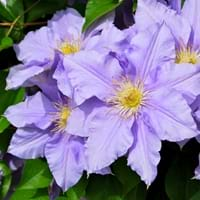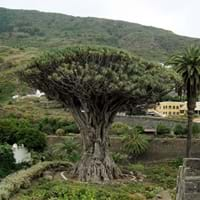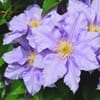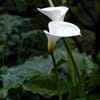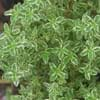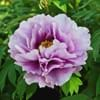Life Span
Perennial
Perennial
Type
Vines
Broadleaf Evergreen
Origin
China, Japan
Canary Islands
Types
'Alba Luxurians' clematis, Alpine clematis, 'Bee's Jubilee' clematis, 'Gillian Blades' clematis, 'Rhapsody' clematis
Not Available
Number of Varieties
Not Available
Habitat
Roadsides, Thickets
Volcanic Islands
USDA Hardiness Zone
4-9
11-12
Sunset Zone
A2, A3, 2a, 2b, 3a, 3b, 4, 5, 6, 7, 8, 9, 10, 11, 14, 15, 16, 17, 18, 19, 20, 21, 22, 23, 24
16, 17, 21, 22, 23, 24
Habit
Upright/Erect
Upright/Erect
Flower Color
Blue, Pink, Red, White
White
Flower Color Modifier
Not Available
Not Available
Fruit Color
Brown
Not Available
Leaf Color in Spring
Light Green, Sea Green
Dark Green
Leaf Color in Summer
Green, Sea Green
Dark Green
Leaf Color in Fall
Green, Sea Green
Dark Green
Leaf Color in Winter
Not Available
Dark Green
Leaf Shape
Ovate
Long linear and narrow
Plant Season
Spring, Summer
Spring, Summer, Fall, Winter
Sunlight
Full Sun
Full Sun, Partial Sun
Growth Rate
Medium
Very Slow
Type of Soil
Loamy, Well drained
Loam, Sand
The pH of Soil
Neutral, Slightly Alkaline
Neutral, Alkaline
Soil Drainage
Well drained
Well drained
Bloom Time
Fall, Spring, Summer, Winter
Summer
Tolerances
Not Available
Drought, Frost, Salt
Where to Plant?
Ground
Container, Ground, Pot
How to Plant?
Grafting, Seedlings
Seedlings, Stem Planting
Plant Maintenance
Medium
Low
Watering Requirements
It cannot sustain wet-feet, Keep the ground moist but not water-logged, Requires regular watering, Water Deeply, Water twice a day in the initial period
Average Water Needs, Do Not over Water, Keep ground moist, Needs less watering, Never Over-water, Requires watering in the growing season
In Summer
Lots of watering
Less Watering
In Spring
Moderate
Less Watering
In Winter
Average Water
Less Watering
Soil pH
Neutral, Slightly Alkaline
Neutral, Alkaline
Soil Type
Loamy, Well drained
Loam, Sand
Soil Drainage Capacity
Well drained
Well drained
Sun Exposure
Full Sun
Full Sun, Partial Sun
Pruning
Cut or pinch the stems, Prune after flowering, Prune for shortening long shoots, Prune in spring, Prune to control growth, Remove dead or diseased plant parts, Remove shoots
Prune if you want to improve plant shape, Remove damaged leaves, Remove dead branches, Remove dead leaves, Remove hanging branches
Fertilizers
All-Purpose Liquid Fertilizer
Water soluble fertilizers
Pests and Diseases
Aphids, Canker, Leaf spot, Powdery mildew, Rust, Whiteflies
Red blotch
Plant Tolerance
Drought
Drought
Flower Petal Number
Single
Single
Foliage Texture
Medium
Medium
Foliage Sheen
Matte
Glossy
Allergy
Colic, Diarrhea, Irritation to intestines, Irritation to stomach, Irritation to urinary tract
Toxic
Aesthetic Uses
Showy Purposes, Used for decorating walls, fences, gates, hedges, etc.
Beautification, Landscape Designing
Beauty Benefits
Not Available
Not Available
Environmental Uses
Air purification
Air purification, Food for insects, Nesting sites for birds
Medicinal Uses
Bone disorders, Gout, Headache, Joint pain, Syphilis, Varicose veins
Nutrients
Part of Plant Used
Leaves, Root bark, Vines
Flowers, Leaves, Stem
Other Uses
Employed in herbal medicine
Can be made into a herbal tea, Decoration Purposes, Showy Purposes, Used As Food, Used as Ornamental plant, Used for its medicinal properties
Used As Indoor Plant
No
Yes
Used As Outdoor Plant
Yes
Yes
Garden Design
Not Available
Container, Feature Plant, Mixed Border, Tropical
Botanical Name
Clematis
DRACAENA draco
Common Name
Clematis
Drag, Canary island dragon tree
In Hindi
क्लेमाटिस
ड्रैगन ट्री
In German
Klematis
Drachenbaum
In French
Clématite
dragonnier
In Spanish
Clemátide
Drago
In Greek
κληματιτής
Δράκος Tree
In Portuguese
Clematite
Dragoeiro
In Polish
Clematis
smok Drzewo
In Latin
Clematis
draco ligno
Phylum
Tracheophyta
Tracheophyta
Class
Magnoliopsida
Liliopsida
Order
Ranunculales
Liliales
Family
Ranunculaceae
Agavaceae
Clade
Not Available
Angiosperms, Monocots
Tribe
Anemoneae
Not Available
Subfamily
Ranunculoideae
Nolinoideae
Number of Species
Not Available
Importance of Clematis and Dragon Tree
Want to have the most appropriate plant for your garden? You might want to know the importance of Clematis and Dragon Tree. Basically, these two plants vary in many aspects. Compare Clematis and Dragon Tree as they differ in many characteristics such as their life, care, benefits, facts, etc. Every gardener must at least have the slightest clue about the plants he wants to plant in his garden. Compare their benefits, which differ in many ways like facts and uses. The medicinal use of Clematis is Bone disorders, Gout, Headache, Joint pain, Syphilis and Varicose veins whereas of Dragon Tree is Nutrients. Clematis has beauty benefits as follows: Not Available while Dragon Tree has beauty benefits as follows: Not Available.
Compare Facts of Clematis vs Dragon Tree
How to choose the best garden plant for your garden depending upon its facts? Here garden plant comparison will help you to solve this query. Compare the facts of Clematis vs Dragon Tree and know which one to choose. As garden plants have benefits and other uses, allergy is also a major drawback of plants for some people. Allergic reactions of Clematis are Colic, Diarrhea, Irritation to intestines, Irritation to stomach and Irritation to urinary tract whereas of Dragon Tree have Toxic respectively. Having a fruit bearing plant in your garden can be a plus point of your garden. Clematis has showy fruits and Dragon Tree has showy fruits. Also Clematis is not flowering and Dragon Tree is not flowering . You can compare Clematis and Dragon Tree facts and facts of other plants too.
